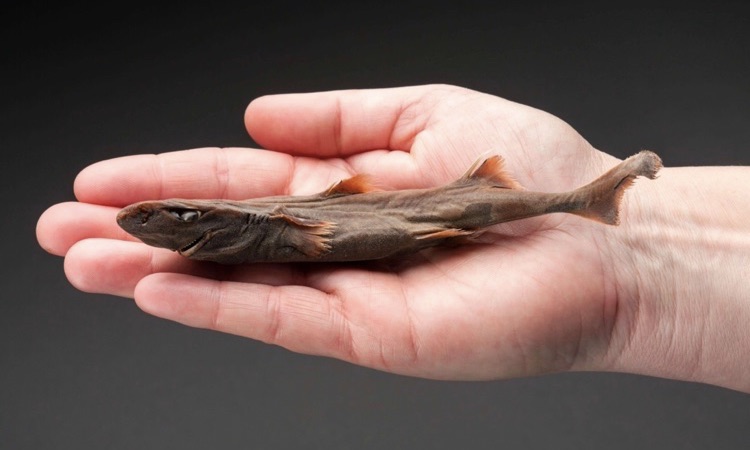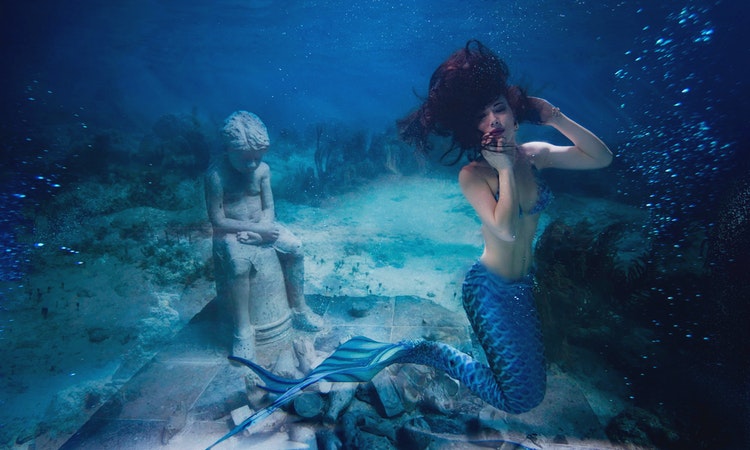The term “horse mackerel” is a catch-all for various types of fish found in English-speaking regions. It typically refers to pelagic fishes belonging to the Carangidae family, such as those from the Trachurus or Caranx genera. Read on to learn more about the different species of horse mackerel.
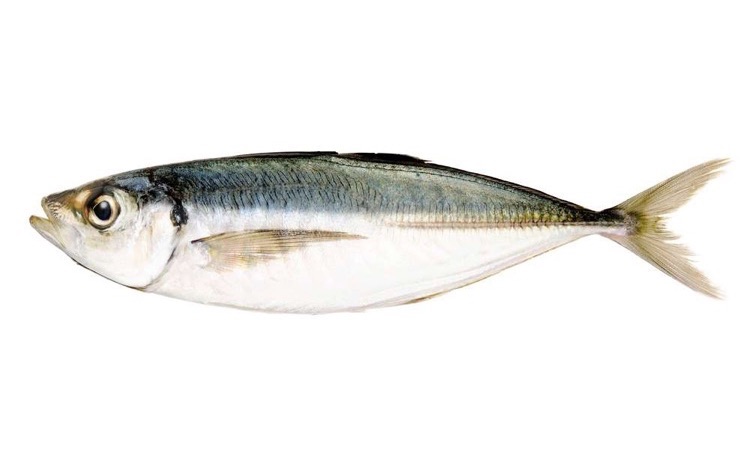
Different Types of Horse Mackerel
Generally speaking there are 12 different types of horse mackerel. We look at each of these 12 below.
Indian Threadfish
The Indian threadfish, also called the Indian threadfin, diamond trevally, mirror fish or plumed trevally, is a large type of coastal marine fish that belongs to the jack family.
This species is widespread in tropical Indo-West Pacific Ocean waters. It can also be found east of Africa all the way to India, Asia, Indonesia and Australia.
Juvenile and adult Indian threadfish occupy different habitats. With adults staying in coastal waters near reefs while juveniles can be found in estuaries and seagrass beds.
The most obvious way to tell an Indian threadfish apart from other fish in the Alectis genus is by the slight concavity in its head.
The Indian threadfish is a relatively large species. It can grow to be 165 cm long and 25 kg in weight. This fish is carnivorous, meaning that its diet consists of other animals, such as smaller fishes, cephalopods (squid-like creatures), and crustaceans. The commercial importance of the Indian threadfish isn’t very high, though it has been raised in aquaculture farms in Singapore.
Blue Runner
The blue runner, which is also known as the bluestripe jack, Egyptian scad, hardtail jack or hardnose, is a very common marine fish classified under the jack family Carangidae. It moderatelylarge in size.
The blue runner is found in the Atlantic Ocean, from Brazil to Canada in the west. And from Angola to Great Britain including the Mediterranean Sea in the east.
Several morphological features distinguish the blue runner from similar species, including jaw length, gill raker count and lateral line scale counts. The blue runner is known to grow up to 70 cm long and 5.05 kg in weight, but average sizes are much smaller.
The blue runner is a schooling, predatory fish. It mostly preys on other fish in shallower water, as well as various small seafood and animals.
Fish living further offshore feed nearly only on microscopic organisms in the water. The species reaches sexual maturity at between 225 and 280 mm (9-11 inches) across its range, with breeding occurring offshore year round, although this peaks during the warmer months.
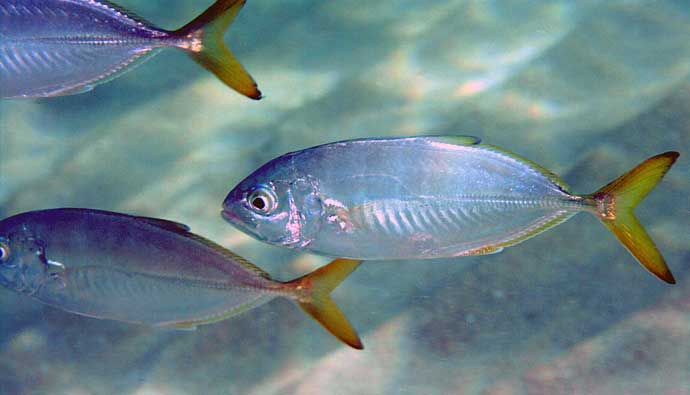
Crevalle Jack
The crevalle jack, also known as the common jack, black-tailed trevally, black cavalli or jack crevalle is a fish species classified within the Carangidae family. It is found in marine habitats across the world and is considered to be a fairly common fish overall.
The crevalle jack fish is located in the tropical and temperate waters of the Atlantic Ocean. The western region reaches from Nova Scotia, Canada to Uruguay, while the eastern territory extends from Portugal to Angola. This type of fish is also present in the Mediterranean Sea.
It is set apart from other fish by its deep body, fin coloration and more thorough anatomical features, like fin ray and lateral line scale counts. It is one of the largest fish in the genus Caranx. The Crevalle Jack can grow to be 124 cm long and weigh 32 kg. Fish this large are rare though they typically only reach 60 cm in length.
The crevalle jack fish lives in both offshore and inshore waters to depths of 350 m typically near reefs, bays, lagoons and estuaries.
Young fish that currents push north into the eastern Atlantic are known to return to more tropical waters before winter; however, if they don’t migrate back) mass die-offs occur as the temperature dips below what the species can tolerate.
The crevalle jack fish is not only powerful, but also predatory. While it mainly feeds on small fish, studies have shown that invertebrates such as prawns, shrimps, crabs, mollusks and cephalopods form a minor part of its diet too.
Torpedo Scad
The torpedo scad, also called the hardtail scad, finny scad, or cordyla scad, is a type of moderately sized marine fish classified in the jack and horse mackerel family Carangidae.
The torpedo scad roams the tropical Indo-Pacific region, from South Africa in the west to Tonga in the east, as far north as Japan and south to Australia. Like billfish, it’s a pelagic fish that often school together and usually stay near the surface of inshore or offshore ocean waters.
The torpedo scad is noted for its long, tubular body and distinctive finlets on the dorsal and anal fins. It typically grows to be no longer than 40 cm, but the largest recorded individual was 80 cm in length and 4 kg in weight. This predatory fish feeds actively on smaller fish, squid, and crabs.
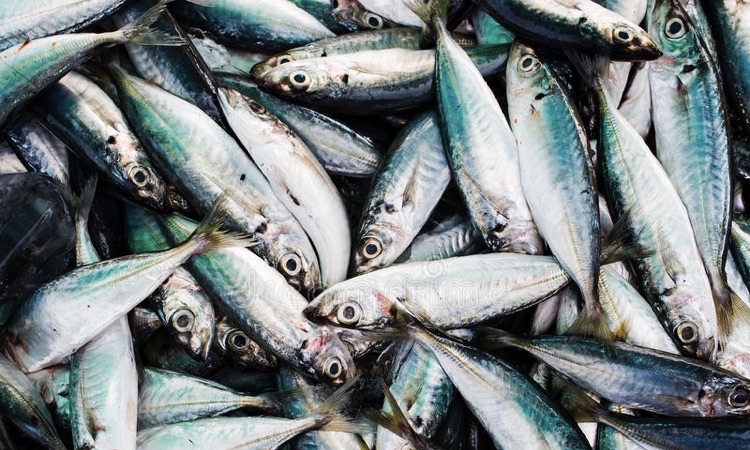
Pilot Fish
Young pilot fish often group together around sharks, rays and sea turtles where they feed off the host’s ectoparasites and leftover food.
Pilot fish are also known for following ships for long distances. One was even found all the way in County Cork, Ireland. Many have also been sighted on the shores of England. In fact, their fondness for ships led the ancients to believe that they would help navigate a ship to its desired course.
The pilot fish typically has a dark blue to blackish-silver color. However, its belly is usually lighter in color.
The really interesting thing about pilot fish is that their color can temporarily change when they get excited. For example, the dark bars on their body may disappear and it might turn silvery-white with three broad blue patches on its back!
The pilot fish, which can reach a maximum length of 60-70 cm, is distinguished by its five to seven dark bands running horizontally across its body. Although it is edible and considered to taste good, the pilot fish is seldom caught because it becomes very erratic when hooked.
Australian Bonito
The Australian bonito or little bonito, is a fish belonging to the family Scombridae. It is found in eastern Australia and New Zealand, typically swimming at depths of 30 m (98 ft). The average length of an adult Australian bonito is 40-45 cm (16-18 inches) fork length with a weight of 1.8-2.3 kg (4-5 pounds), but it can grow up to 100 cm (39 inches) long and 9.4 kg (21 pounds) heavy.
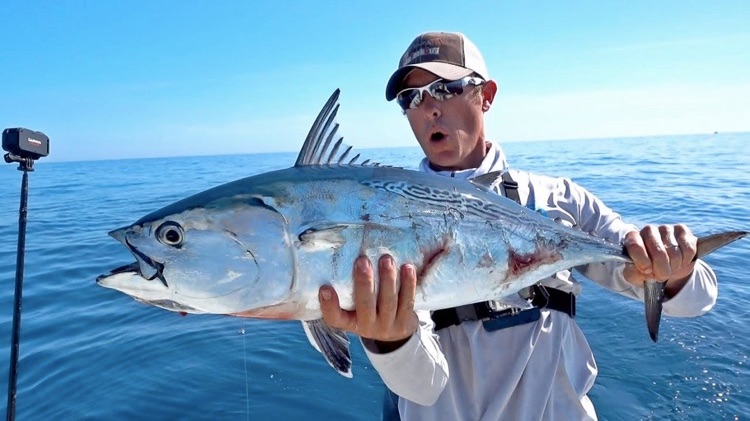
Priacanthidae
The Priacanthidae, more commonly known as the bigeyes, are a family of 18 species of marine ray-finned fishes. Some members of the Priacanthidae go by the name Catalufa. The scientific name for this family comes fromPrioo-, which refers to biting + Akantha, meaning thorn. This is in reference to the very rough and spined scales that cover these fish.
“Bigeye” is the common name for a fish genus that derives from the members’ unusually large eyes. These deep-sea predators are mostly red, but some have silver, brown, or black patterns. Most species reach 30 cm (12 in) at most. However, a few species can grow to over 50 cm (20 in).
The majority of this family’s members reside in the tropical and subtopical parts of the Indian and Pacific Oceans. However, four species (Cookeolus japonicus, Heteropriacanthus cruentatus, Priacanthus arenatus, Pristigenys alta) are found in the Atlantic Ocean.
They typically live near rock outcroppings or reefs but some have been discovered living in open waters. Many species exist at depths too deep to exploration by scuba diving equipment endangering their populations. Some types are consumed as seafood dishes deepening concern for them.
Cape Horse Mackerel
The Cape horse mackerel is a fish that resembles a mackerel and is in the Carangidae family. It’s typically found in pelagic areas of the southeastern Atlantic Ocean and is sought after by fishermen, usually as bycatch.
The Cape horse mackerel is a long, slightly flattened fish with a big head. The only thing that distinguishes it from other similar fish is a tiny black spot near the top of its operculum.
The top side of their bodies and heads are dark, ranging in color from bluish green to black or grey. The underside of their body is usually paler,white or silver, and they can grow to be 60 cm long though most are only 30 cm.
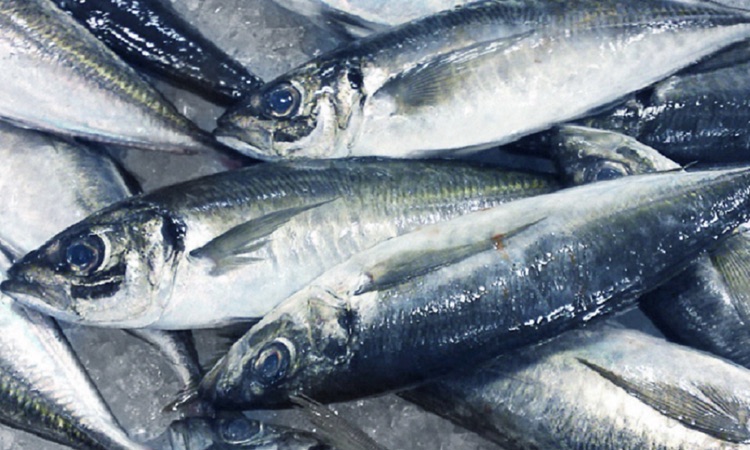
Greenback Horse Mackerel
The greenback horse mackerel or greenback scad (Trachurus declivis) is a species of jack in the family Carangidae.
It can be found near western and southern Australia, as well as around New Zealand. This fish prefers shallower depths of only 460 m at most but can survive in surface level water too. Its length is known to reach up to 64 cm long.
The urban legend surrounding this fish likely led to its common name. It’s not only an important commercial fish, but also large enough that many people enjoy fishing for it as a sport. Some might be turned off by the taste of its flesh, however.
Japanese Horse Mackerel
The Japanese jack mackerel may look like a typical mackerel, but it is actually part of the family Carangidae. This family contains other members such as jacks, pompanos, trevallies and scads.
These fish can grow up to 50 centimeters (20 inches) long, but they are more commonly found at 35 cm (14 in). They have been known to weigh a maximum of 0.66 kg (1.5 lb). The oldest recorded age for this species is 12 years old. You can find them off the coast of Japan where they tend to reside near sandy bottoms.
The primary food source for these fish are small crustaceans, such as copepods and shrimps. They also eat small fish. These fish greatly resemble the yellowtail horse mackerel found in New Zealand and Australia. However, they can be distinguished by their additional gill rakers and larger eyes.
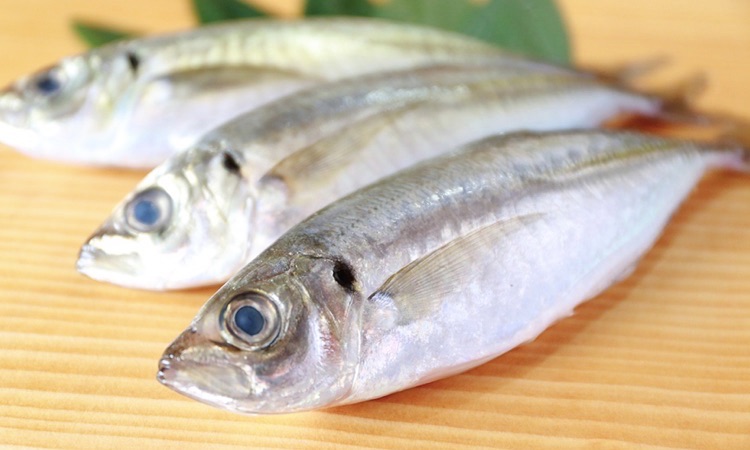
Yellowtail Horse Mackerel
The yellowtail horse mackerel, also called the yellowtail scad, is a jack in Carangidae that lives near Australia and New Zealand at most depths of 500 meters. It can grow to be 50 centimeters long.
The yellowtail scad is the only member of its genus and can be distinguished from similar fish species by a well-developed adipose eyelid and finlet-like extensions on the last rays of both the dorsal and anal fins.
It lives in areas near coastlines, such as bays and coral reefs. It preys on small fishes and crustaceans. The yellowtail scad is an important part of many fisheries throughout its range, caught by a number of netting and hook-and-line methods. It is well liked as a food fish in some regions and can be cooked or preserved using different techniques.
Atlantic Horse Mackerel
The Atlantic horse mackerel is a type of jack mackerel found in the eastern Atlantic Ocean. It is an important species for commercial fisheries and is listed as vulnerable on The IUCN Red List of Threatened Species.
The Atlantic horse mackerel has a long, thin body that is compressed from front to back. It has a large head, with the lower jaw extending beyond the upper jaw. The eye is well protected by an adipose eyelid.
This fish has two dorsal fins. The first is tall and has seven thin spines, with the final spine being much shorter than the others. The second dorsal fin is separated from the first by a narrow gap. It is considerably longer than the first, with 29-33 soft rays.
The anal fin on this fish is similar in size to the second dorsal fin. At the front of it are two spines pointing outwards. The pelvic fin, which is located towards the back end below the pectoral fins, has a single spine and five soft rays fanning out from it.
The fish is dark blue, with silver sides and a white belly. There is a dark spot on the gill cover. This species grows up to 60 cm long (24 inches) but is usually around 25 cm (10 inches). It weighs 1-1.5 kg (2-3 pounds).


